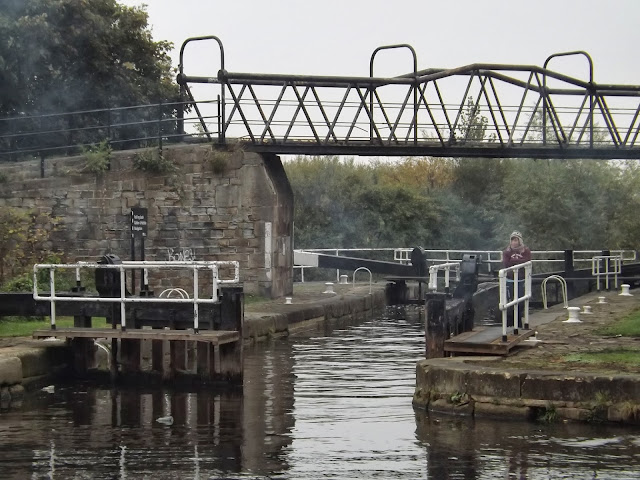Tuesday 22nd October.
Normally, when away at sea, the last day of a trip was a day of anticipation, excitement and happiness. Today is the day we leave the boat after six months to go back to being land based and just visit the boat and I'm really not too sure how to feel.
After a car load of stuff taken yesterday we still seem to have another full car load for today. I had been congratulating myself on the fact that we haven't put too much junk aboard but I think it is mainly clothes and foot wear and bedding etc.

Normally, when away at sea, the last day of a trip was a day of anticipation, excitement and happiness. Today is the day we leave the boat after six months to go back to being land based and just visit the boat and I'm really not too sure how to feel.
After a car load of stuff taken yesterday we still seem to have another full car load for today. I had been congratulating myself on the fact that we haven't put too much junk aboard but I think it is mainly clothes and foot wear and bedding etc.
This was the picture when we were about to leave today
and

this was the picture the day we moved on to the boat on 13th April. The scenes are very similar if not quite so sunny.
Once we had packed everything we were taking and then given the boat a good scrub out internally I had time to go to the outside and put rust converter on any little spots I could see on the paintwork. I squirted WD40 in all the padlocks, hinges, external switches etc and catches. I turned the Hurricane heating unit off and set up the greenhouse heaters so that they come on when the internal temperature drops below 5deg. I plan to go back fairly soon and check everything over again. Just as well as forgot to turn the gas off and left the fuse panel on too. I need to do an engine and filter change and need to top the fuel tank right up too to minimise condensation in the tank and so getting in the fuel and maybe assisting the fuel bug to get established. I have a few other jobs to do over the winter so hopefully we will be back and forwards regularly.
Helen is feeling quite sad with the thought of leaving our home for the past six months.
She cheers up a little when we talk of going out for long weekends, or a trip down to Doncaster or Sheffield!
Now we are land based for a while I wont be blogging everyday but will get something down at least every week and hopefully more often when the mood takes me. I'd like to thank all of you who have read this. It started out as just keeping in touch with my Mum and family whilst I am away but has now been viewed about 12000 times from folk in UK, USA, Russia, NZ, Poland, Germany, France, China, Sweden, Indonesia, Hungry, Singapore, Ukraine, Australia, Greece and Hong Kong. I am not computer savvy really but assume these places will be where the server used is sighted but still I am impressed.
Much More impressive though is the fact that I actually have two 'followers'. I think this is when somebody clicks on my sight and adds it to their own so that they can come to my site directly. (please don't quote me though). I would like to thanks them very much for actually putting their name to this stuff and like to say a personal hello and thanks to John R from Stirling in Western Australia and the Crew of the Festina Lente. Both follow lots of other boaters blogs so I am reassured that there is no element of stalking going on.
Good luck to all those continuously cruising this winter. Our hopes are to be with you sometime but with a house, children and other responsibilities it is not to be just yet.
Please keep checking out for my less frequent postings over the next few months.
Good Luck and goodbye for now.





















































